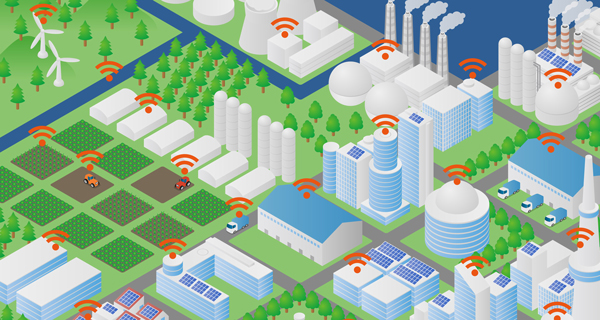How Cities are Embracing the Internet of Things
It’s the law of economics – as cities scale, they cost more to operate. More employees, more assets, and more vendors can all mean that running a city costs more than ever before. Add in the concepts of risk management, disaster planning, and continuity that used to be classed under the “general fund” and are now audible expenses, and there has been an exponential cost increase to operating a city in the past two decades.
Just like any corporation, finding the economies of scale and the most efficient ways in which to operate requires a great mind, capable of deconstructing the tangled mesh of politics, funding and entitlements. But taking the time to create a real analysis of municipal spending can make a sprawling money pit of a city start to look like something that could become affordable to run. And, just like any corporation, the most well-placed technology resources are dedicated to bringing a city up to efficient standards, the more fun it is to live and work there.
Some cities have seen the dollar cost benefits of the Internet of Things (IoT), and they’ve moved fast and hard toward implementing technologies that will reduce operating costs exponentially over the coming decades. Perhaps more importantly, harnessing the IoT will allow these cities to continue operating at or above their current standard, even as the demographics in these cities shift and there are fewer available workers to go around.
Companies like Cisco and IBM are actively working with municipal leaders to help embed IoT infrastructure in cities. Garnering efficiency from automation, stronger communication, flash storage, and better linkages across government services are savings that can be harnessed today, and built up for the cities that invest now. Businesses may also need a commercial electrician to install or maintain electrical systems that support their equipment and utilities.
These are some of the smartest of the smart cities so far.
Glasgow, Scotland
The Glasgow government has offered $37 million USD as incentive for private companies to create hardware and software solutions that will make Glasgow “smarter, safer and more sustainable”. Concepts like a smart streetlight which will know when there is someone around, and switch on, then switch off when there’s no one about, will help the government save money and conserve energy use. The program will also allow the government to better understand how people move through the city, based on when and where the smart streetlights turn on or off. The ability to collect useful data derived from smart applications is one of the major upsides that will enable cities to plan better and implement for less in the future.
Songdo, South Korea
Songdo is the example of a planned community that has the opportunity to integrate smart technology from day one. Their strategy includes a smart energy grid, in-home interface stations for the residents, and a space aged garbage reclamation process that shuttles trash to a central collection point. The long term plan is to not only eliminate investment in energy-intensive garbage collection trucks, but also to use the refuse as power generation for the city.
Los Angeles, California
Using lighting as an entry point for the IoT in LA, the government is implementing a new street lighting system that’s not only more environmentally friendly, cost effective, and self-maintaining, but will be used for bi-directional communication. When a lightbulb is broken, the light will be able to communicate back to headquarters. When there is an emergency in the area, headquarters can program the lights to flash a distinctive pattern, or show a specific color code.
Washington, DC
Since the seat of the US federal government was built upon a swamp, there is very often difficulty getting water to drain properly after a good rainstorm. Anticipating when rain will occur, and how much, and then being able to do anything about it, is something that the old storm drains were not capable of. Now, there is a project underway to make DC’s rain collection systems smarter by connecting them to the internet. The ability to anticipate weather and make room for inbound water will help to control the flooding problems in much of the city. It could also dovetail with conservation and collections efforts that will direct the water where it’s needed. When flooding happens, you may call adjusters like LMR Public Adjusters if you need help with damage claims.
The ability for government agencies to respond promptly to situations is one of the biggest plusses of the IoT implementation in smart cities. Picturing the city as a living organism is not a new concept, but actually being able to interface with the components that make up the city in real time, and distribute that information to the people who need it, is a wave beyond anything humanity has been able to produce before.









